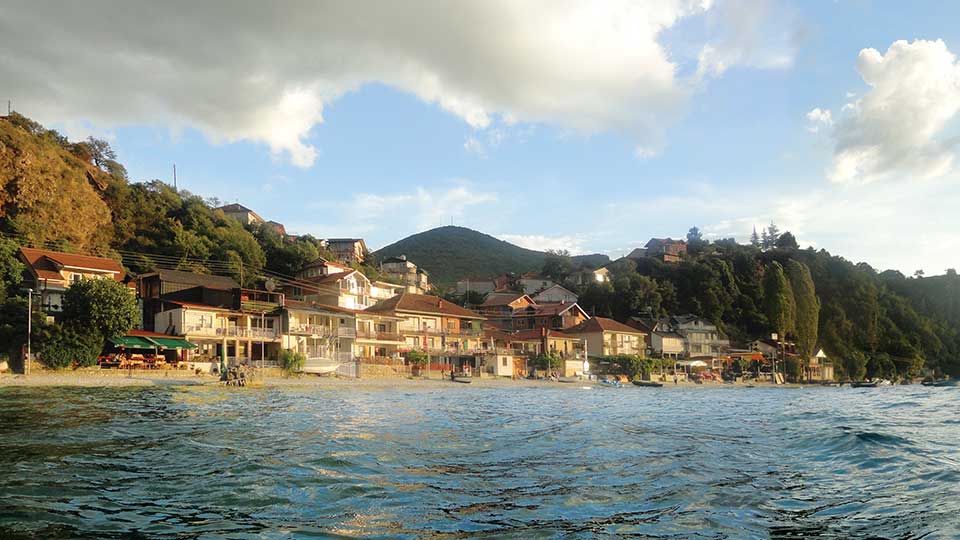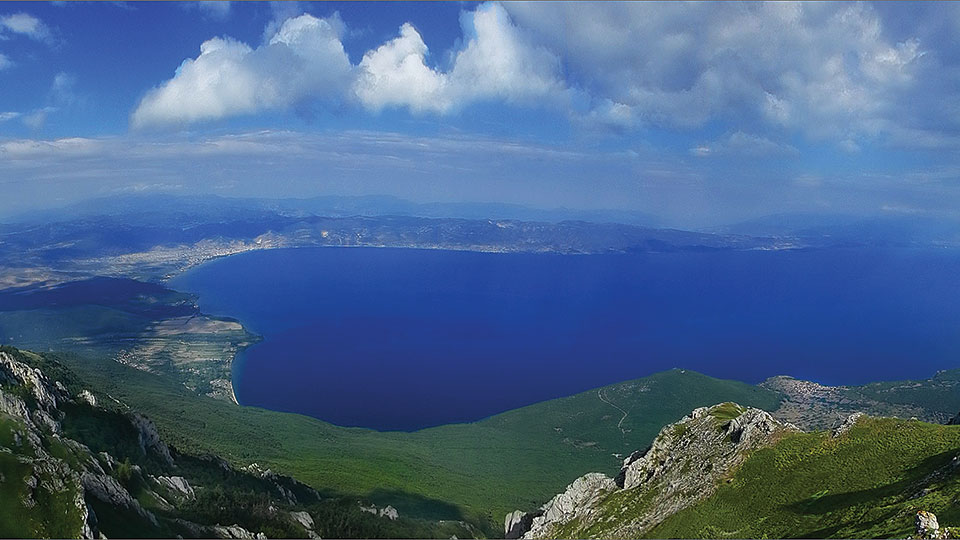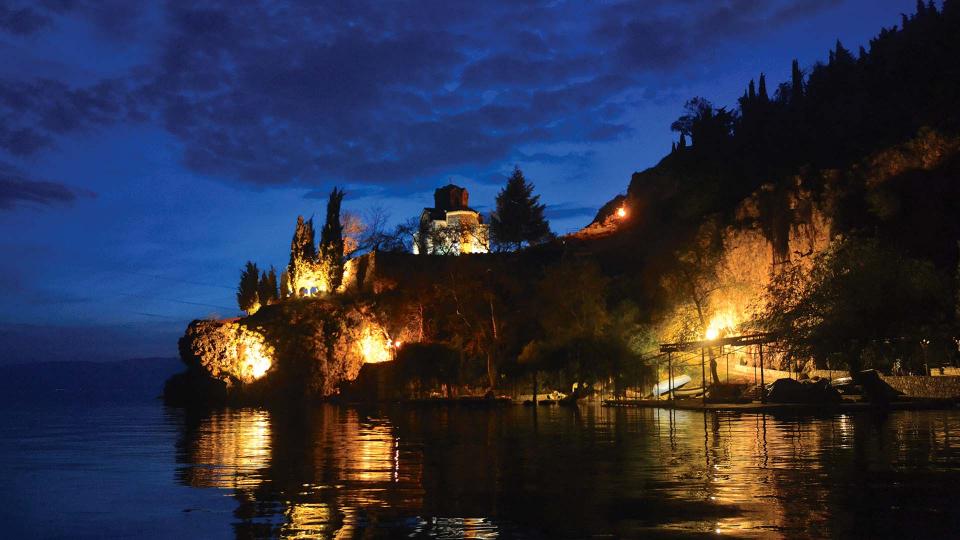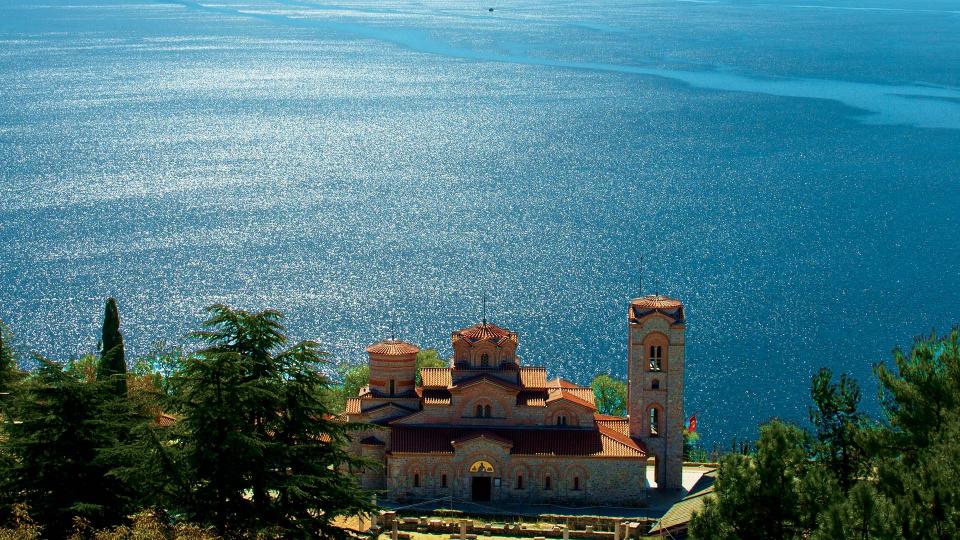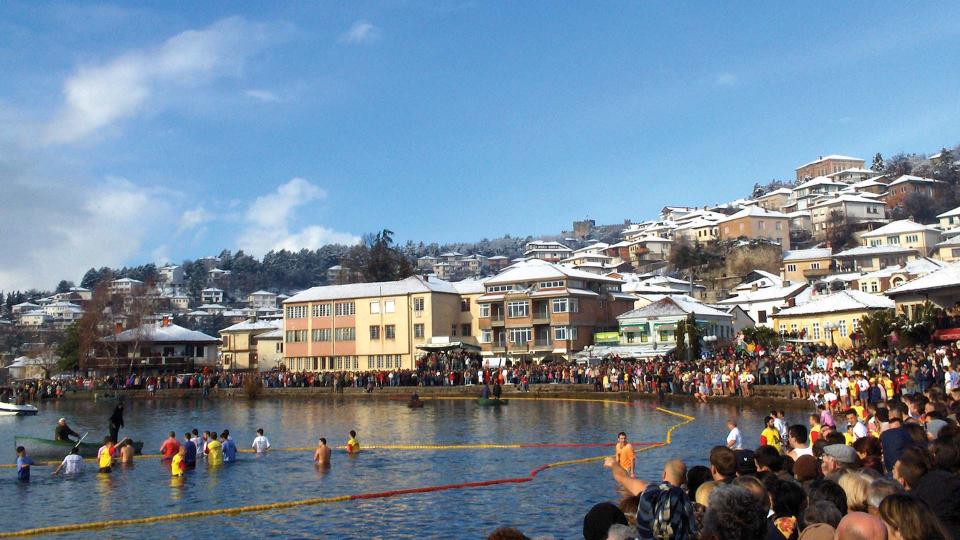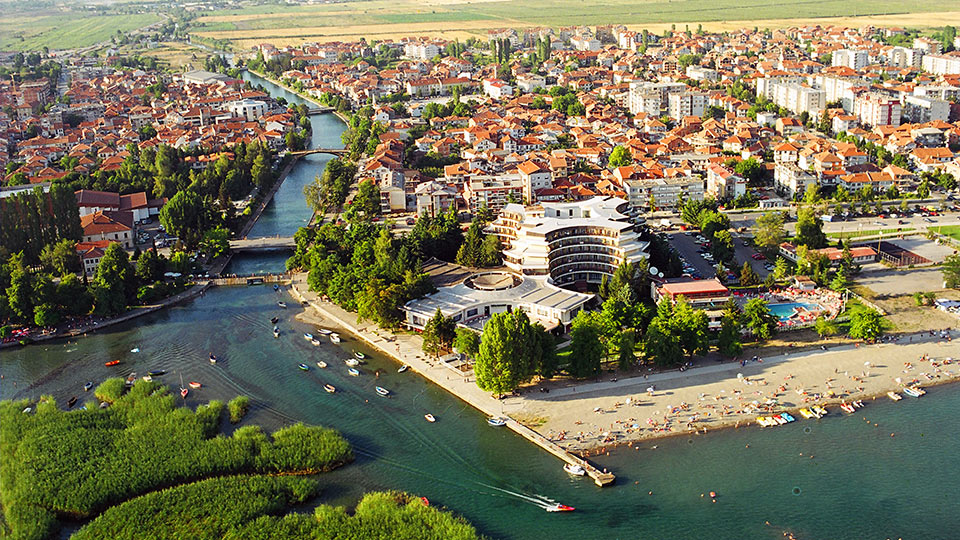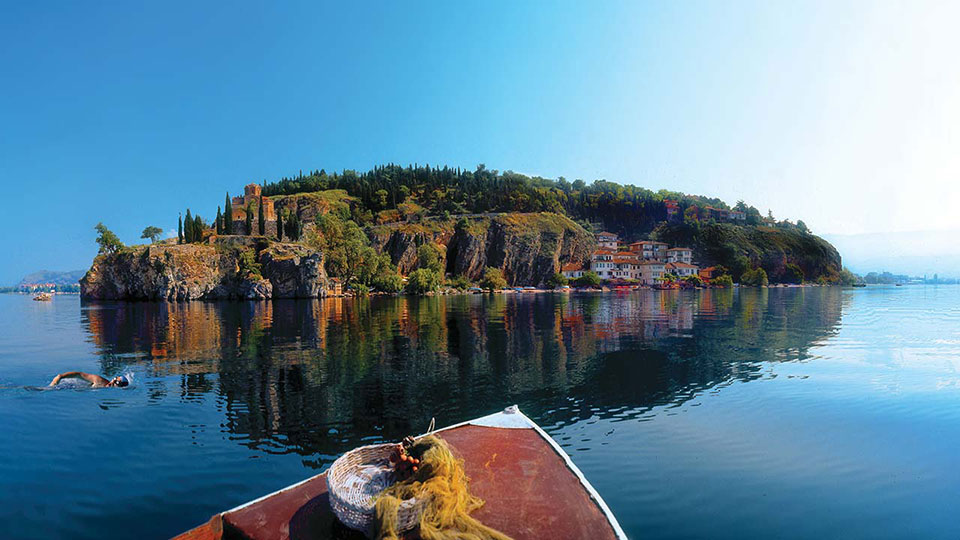This is actually a reconstructed prehistoric pile settlement from the 12th-7th century BC, placed above a platform held by wooden piles. It is the newly opened water museum, where the remains of an ancient habitat, a diving base and reconstructed fortresses from the Roman Empire from the 2nd century are located in the water.
At this site, at a depth of three to five metres, remains of 6,000 wooden piles were found, which probably relied on a common platform with 20 wooden houses. According to the surveys, the area of the settlement extended to 8,500 m2. Given that they were built of trees, reeds and mud, the habitats were susceptible to fires and were frequently renewed, due to the large density of the piles (remains of burnt wood and coal were found). The platform with the mainland was connected with a movable bridge, which during the night was raised for the protection of animals and enemies. Currently a part of the settlement, with seven houses built on a platform that has been installed over 1,200 piles prepared to be more resilient and more durable has been reconstructed. The interior of the houses has also been reconstructed, which offers an interesting experience for the way of life at that time.


